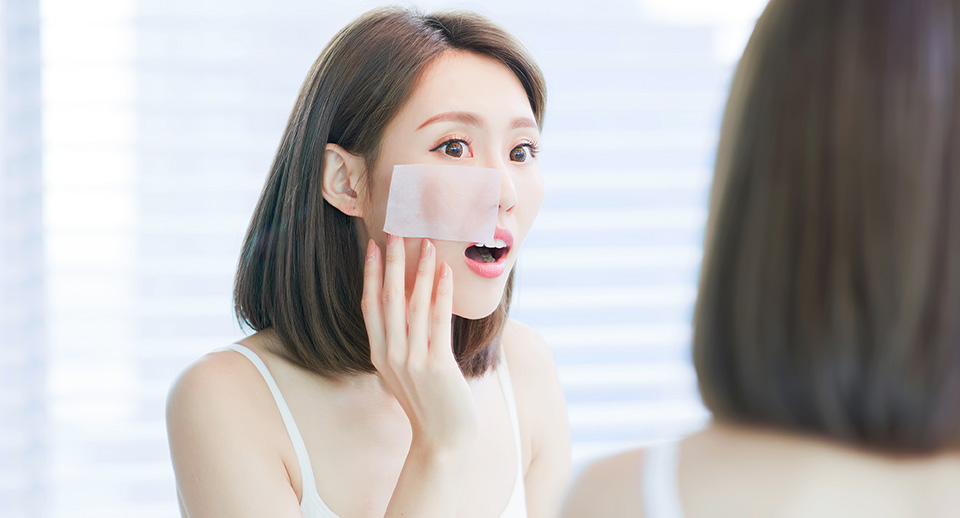
Skincare Basics: How Do I Determine My Skin Type?
Identifying your skin type is the first step to building an effective skincare routine.
Primarily determined by our genetics, there are 6 different skin types that we can have. Each skin type has a unique combination of characteristics that present us with a distinct array of benefits and challenges. Knowing and understanding your skin type will go a long way in helping you achieve the healthy glowing skin of your dreams.
Normal Skin
A normal skin type is defined by a well-balanced complexion in terms of moisture and oil levels. People blessed with normal skin typically do not experience overt dryness and excess sebum production. In addition, they tend not to have persistent skin concerns such as blemishes or dullness that are more commonly associated with other skin types.
Dry Skin
People with a dry skin type have complexions that do not produce enough sebum. As a result, their skin lacks natural lipids that are needed to retain moisture and effectively form a healthy skin barrier to defend against external stressors. Dry skin can appear dull, flaky and cracked. Not to be confused with dehydrated skin, dry skin is a skin type mainly determined by genetics while dehydration is a phenomenon that can occur in all skin types when there is a lack of water possibly caused by dry weather.

Oily Skin
An oily skin type is characterized by overactive oil glands that produce excessive sebum which gives the skin a shiny and greasy appearance. Factors that can contribute to oily skin include genetics, hormonal changes such as menstrual cycle or pregnancy, medication and stress levels. People with oily skin are more susceptible to clogged pores and therefore are at higher risks of developing blackheads and inflammatory forms of acne.
Combination Skin
As its name suggests, a combination skin type exhibits defining traits from more than one skin type on different areas of the face. If you have combination skin, you may notice an oiliness on your T-zone and chin areas while your cheeks and other parts of your complexion remain dry and tend to flake or peel.

Mature Skin
A mature skin type is one that shows visible signs of aging. As we age, our skin loses elasticity and gradually becomes thinner due to a natural loss in volume and density. Mature skin is less able to retain moisture due to a thinner skin barrier and therefore is prone to dryness and dullness. People with mature skin can also develop fine lines and pigmentations such as age spots.
Sensitive Skin
Sensitive skin is defined as having a heightened sensitivity to the external environment. When people with sensitive skin are exposed to new skincare and makeup products, pollutants, chemicals and other irritants, they may experience allergic reactions with symptoms such as discomfort, redness, stinging sensation, breakout or rash.

Determining Your Skin Type
There are 3 easy ways to identify your skin type.
- The Observation Method – Examine your skin closely using a mirror during mid-day, if you notice dry patches and flakiness, you have a dry skin type. If you see greasiness all over, you have an oily skin type, but if you only have shine on your T-zone, you have combination skin. If you witness fine lines around your eyes and mouth, you have mature skin.
- The Bare Face Method - Cleanse your face with a gentle facial wash, do not apply any products and wait 30 minutes. If your skin feels tight and dry, you have a dry skin type. If it feels itchy and sensitive to the touch you may have sensitive skin. You may have oily skin or combination skin if excess sebum starts to form.
- The Blotting Sheet Method – Best carried out in the afternoon or in the evening, dab blotting sheets on different parts of your face. If you have little to no oil, it is likely that you either have dry skin or normal skin. If your blotting sheets are saturated with sebum, note if they are present only on sheets that you had used on your forehead and nose or if they are present on all parts of your face.
Our skin types can change when we are at different stages of life. Adolescents may experience an oily skin type due to puberty and as we age, we can have dry skin and start to exhibit signs of mature skin. Accurately identifying our skin type can help us create a targeted skincare routine that addresses specific skin concerns.











